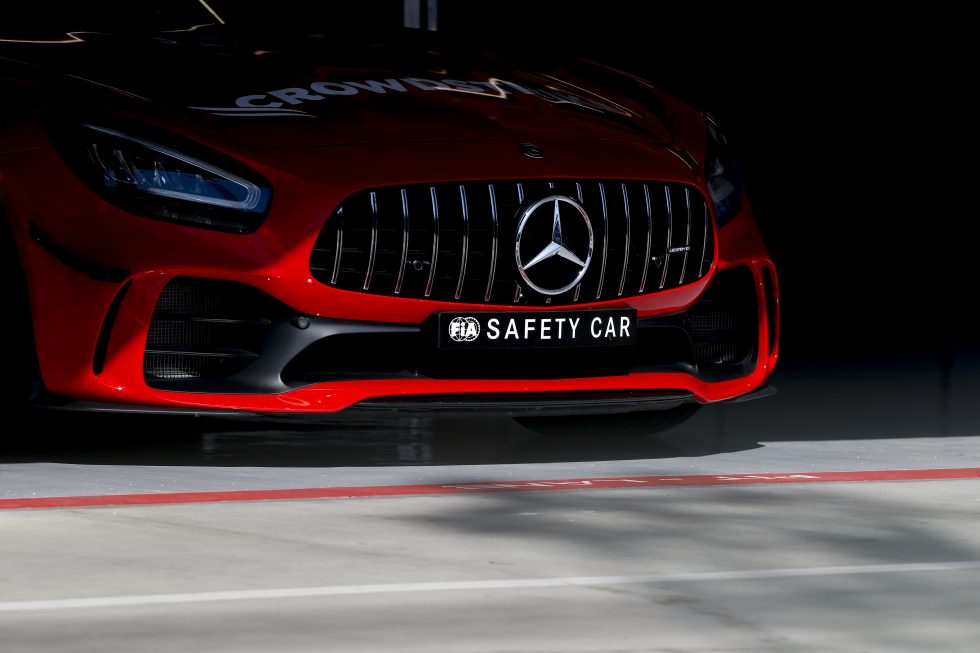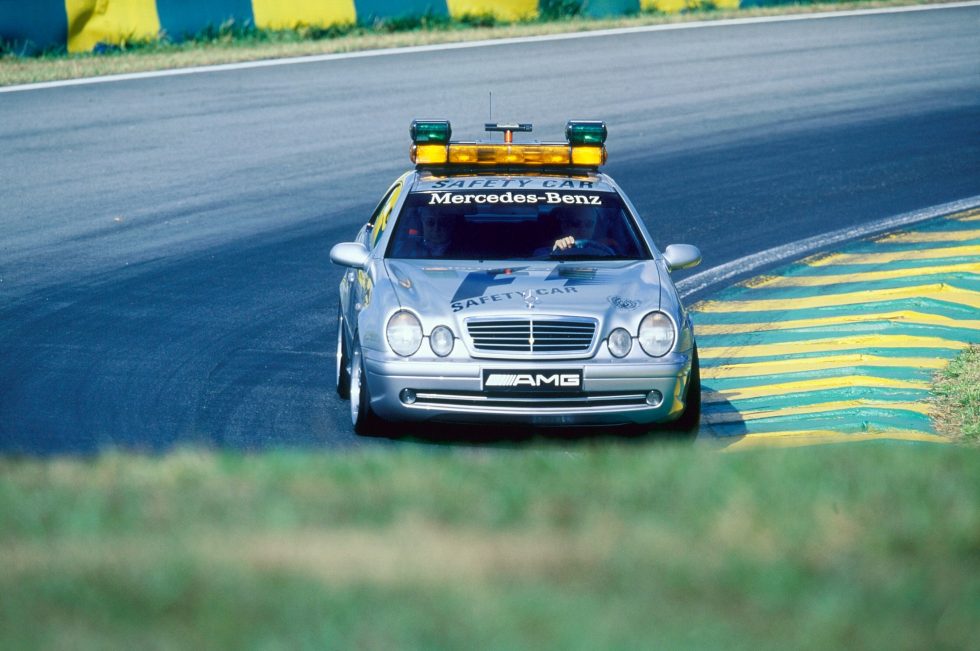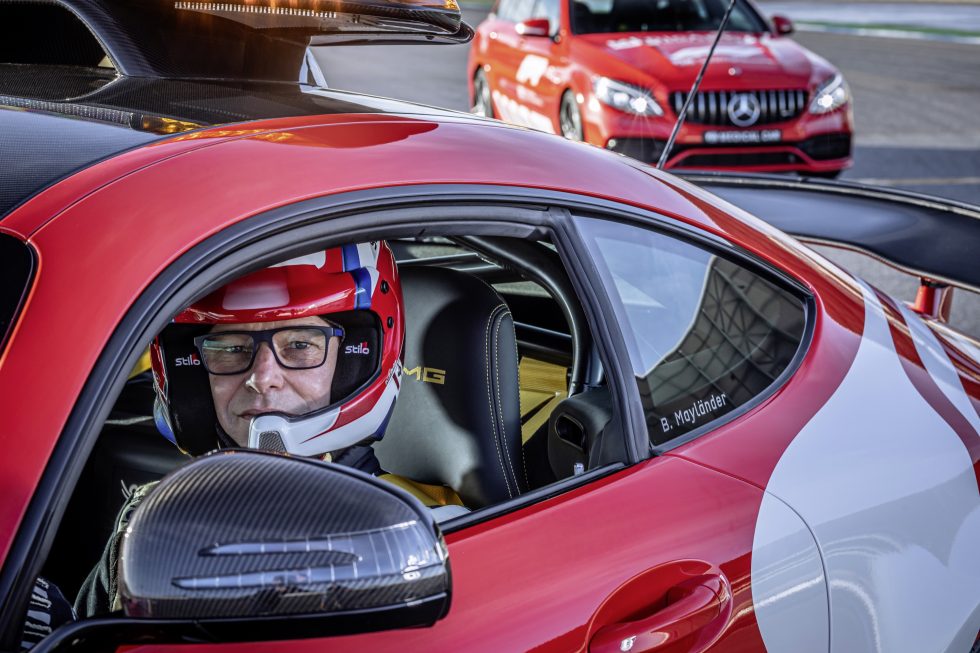
Mercedes-AMG
Despite following Formula 1 closely for several decades, I still don’t feel comfortable making predictions about the races. Take the recent Turkish Grand Prix, for example. Were I a betting person, I’d have said that the race, held in treacherous and changing weather, would be interrupted by at least one safety car period, perhaps more. Instead, safety car driver Bernd Mayländer and his co-driver got to watch the entire race from the comfort of their car without being called upon by race control.
The use of a pace car has been well-established in the US, but for much of F1’s existence, the sport relied on trackside, flag-bearing marshals to control or neutralize a race in the event of a crash. That changed in 1993, when F1 got over its case of “not invented here” and adopted the safety car, calling on the service for the first time at that year’s Brazilian Grand Prix.

Jiri Krenek/Mercedes-AMG
On that occasion, the car was a rather mundane Fiat Tempra sedan, and other races saw the job performed by a Ford Escort Cosworth RS, Honda Prelude, and even a Lamborghini Diablo, depending on what each race promoter organized. But in 1996, the sport entered into a partnership with Mercedes-Benz, which has supplied the vehicles ever since. (This year, the company was joined by Aston Martin—which now uses Mercedes engines—with the two companies splitting the races between them.)
Mayländer drove for Mercedes for much of his career, racing in German touring cars (DTM) and sports cars like the CLK-GTR. But in 1999, he was hired for the job of F1 safety driver, racking up 420 races since and still counting. Back in 1999, his office was a CLK 55 AMG, which had plenty of power but didn’t handle anything like today’s Mercedes-AMG GT R, which even on road-legal Pirelli tires is nearly as quick as its race-going GT4 cousin. (For more about the GT R itself, check out our review from 2019.)

Mercedes-Benz
The GT R’s engine is not the most important component, however. “You always need a lot of power, things like that,” Mayländer told me. “The most important thing—and it’s also really improved over the last 22 years—is all the equipment you’re using inside the car. Twenty years ago… you couldn’t really hear race control, or you were driving around the racetrack with a hand radio as a backup. And now we have two digital radio systems. We can even get an email if it’s really important.”
The decision to deploy Mayländer and his co-driver, Richard Darker, rests with F1 race control. That might happen because of weather—there’s too much water on the track, for instance—or because of a crash on the track that safety workers have to respond to. His job is to lead the pack of F1 cars behind him, something that often frustrates those drivers.

Mercedes-AMG
But those F1 drivers can’t always see what Mayländer can from his cockpit. “So we try to make it safe for the situation. I always like to drive as quick as possible, and [it is] fun if you really can drive on the limit. But the speed is related to the instructions of race control,” he explained. Still, Mayländer does try to keep cornering speeds high enough that the F1 cars don’t lose all the heat in their rubber.









